The SilverStone Permafrost PF120, PF240, and PF360 ARGB AIO Coolers Review
by E. Fylladitakis on June 17, 2020 10:00 AM ESTThe SilverStone Permafrost Series AIO Coolers
Aside from the obvious difference of a larger radiator, all three versions of the Permafrost cooler are practically identical. The core design of the coolers is the typical AIO configuration of a single radiator, two hoses, and a block that combines the CPU contact plate and a miniature liquid pump. The designer went with standard rubber tubes with external nylon sleeve braiding for additional protection, which are fixed on the radiator and partially adjustable (just a couple dozen degrees sideways) on the CPU block.
SilverStone focused their design efforts on the main block assembly. The company installed a three-phase engine pump and an AEC-Q100 sine wave generator, increasing the efficiency and lowering the noise output of the pump itself. The AEC-Q100 is certified by the Automotive Electronics Council, thus SilverStone is marketing it as an “automotive grade” generator. We can only agree that it is a high-quality part. The designer also installed a micro-channel copper block and made sure to thermally separate the input and output in order to prevent heat creeping.
The top part of the main block assembly is a real acrylic mirror that hides RGB LEDs. Once lit, the LEDs form SilverStone’s logo on the mirror. The user can adjust the lighting effects, colors, speed, etc., but cannot change the illuminated shape in any way.
SilverStone also claims that their radiators are “automotive grade”. That may be accurate regarding the corrosion protection and/or the material of the radiator. In terms of size, however, even the largest 360 radiator cannot be used as a cooling radiator in any kind of car – it hardly has the mass to be used as a heater core in a very small car. Though this is of no real concern to us, as the Permafrost is going to be used to cool PC processors, not a combustion engine.
On topic, the radiators are typical dual pass cross-flow designs, with tiny fins soldered on thin oblong tubes. This is by far the most dominant radiator design for AIO systems and rightfully so, as it offers the best efficiency within limited proportions and for the temperature differences that AIO coolers have to deal with. The radiators are just 26 mm thick, meaning that the entire assembly with the fans requires only 51 mm of clearance, maximizing compatibility.
The bottom of the main block assembly reveals a sizable, square cooper block. It is neither nickel-plated or polished down to a mirror finish, yet the finish is very smooth and free of imperfections. Do note, however, that these coolers are meant for mainstream desktop processors rather than large HEDT processors; so the contact plate is not large enough to cover Ryzen Threadripper processors and SilverStone does not provide hardware to install any Permafrost cooler onto a TR4 socket.
SilverStone’s application of RGB lighting on the cooling fans is exceptional. The designer placed the LEDs into the fan’s engine, creating a fantastic diffusion visual effect on the fan’s semi-transparent blades. If connected to a compatible motherboard, both the fans and the main block will copy the programmed lighting theme of the system. For those who do not own a compatible motherboard or just do not want to have lighting synergy between different parts, the lighting effects can be programmed from the wired controller, meaning that the user will have to open the case in order to access it.


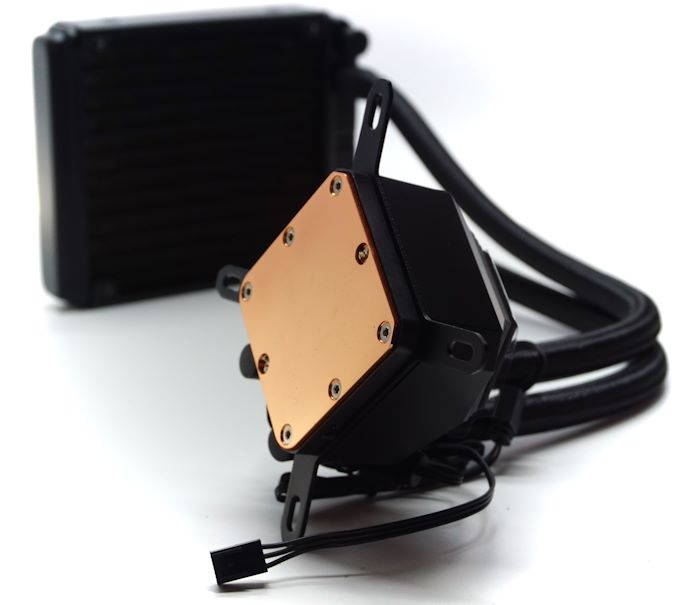
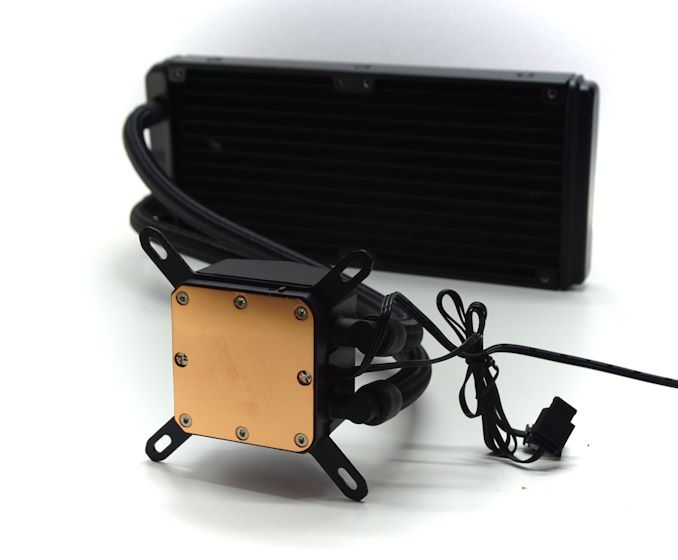

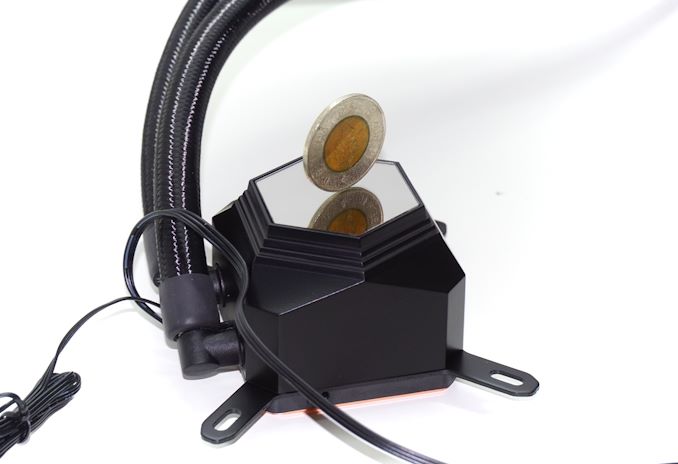
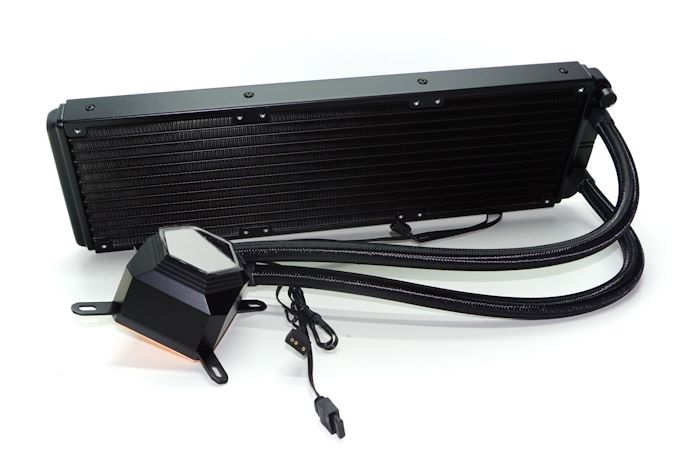
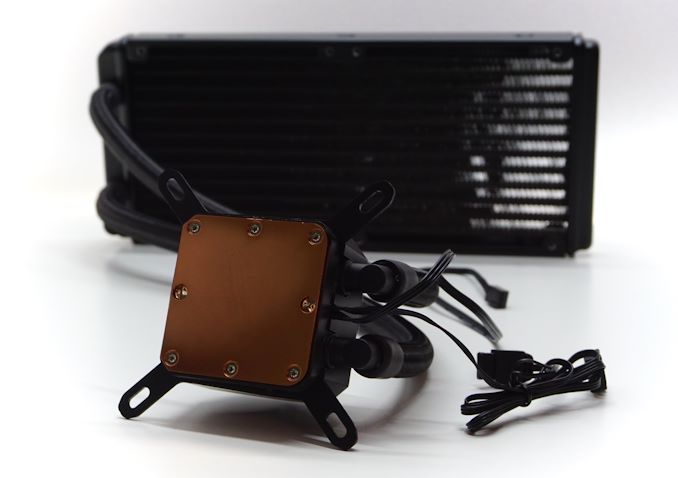
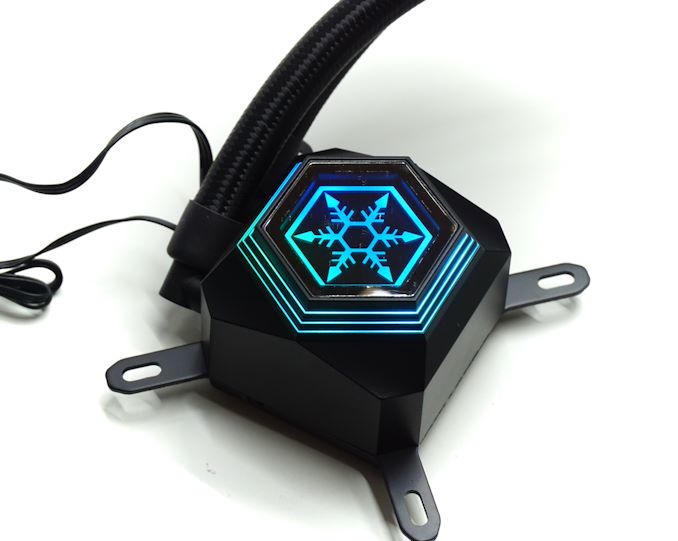
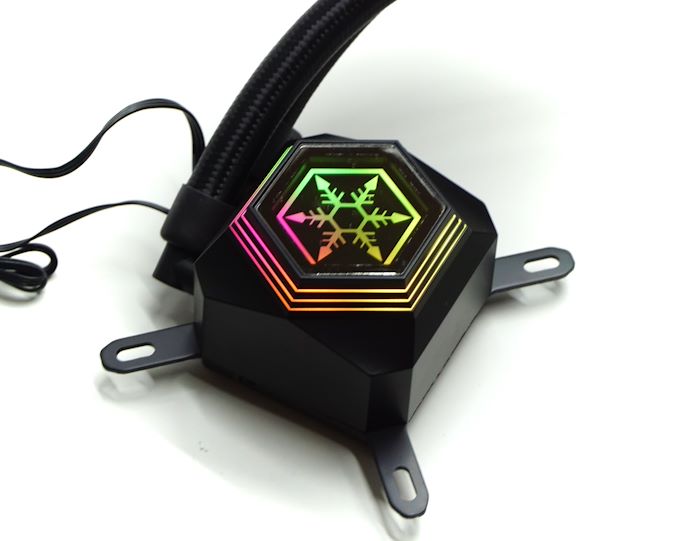
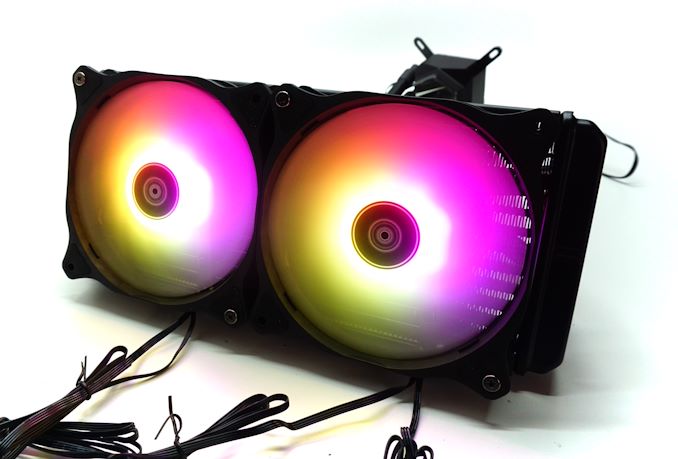








71 Comments
View All Comments
drexnx - Wednesday, June 17, 2020 - link
wish we'd get a teardown of the pumpblock, seems like after many years of asetek stagnation we're finally seeing performance move forward again in AIOswarrenk81 - Wednesday, June 17, 2020 - link
page 2 typo: "The bottom of the main block assembly reveals a sizable, square cooper block."eastcoast_pete - Wednesday, June 17, 2020 - link
Maybe my information is outdated, but isn't there a small, but significant difference in the overall shape (slightly concave vs. slightly convex) of AMD's vs. Intel's heat spreaders that can really affect cooling performance? I may have missed it, but are the copper blocks "fitted" to the respective CPU type? If not, some of that cooling potential is likely being wasted.Also, with current "enthusiast" kind Intel CPUs reaching over 250 W TDP at peak use, any chance of showing results with a steady 250 or 200 W load?
PeachNCream - Wednesday, June 17, 2020 - link
I'm seeing a drop down menu option to select various wattage from 60W up 340W including the 200W and 250W options you would like.eastcoast_pete - Wednesday, June 17, 2020 - link
Yeah, I should have been clearer; that comment/request was in regard to the last graph, which doesn't have the drop-down selection, and is for 100W only.Interestingly, no response by anyone yet on the question about the shape of the copper block; I didn't think it'd matter, until I read some tests that showed a pretty significant difference depending on how true the heatsink matches the heat spreader's shape
p1esk - Wednesday, June 17, 2020 - link
"the contact plate is not large enough to cover Ryzen Threadripper processors"OK thanks
Arbie - Wednesday, June 17, 2020 - link
For those interested, the Noctua NH-D15 is close to the Fractal Design S36 here, except that there's no data on Noctua above 38 dBA:https://www.anandtech.com/show/14621/the-noctua-nh...
Beaver M. - Saturday, June 20, 2020 - link
And thats with 2 fans.Plus you always have the option to sound-insulate your case, which helps a lot on air coolers, while the pumps of AIOs are pretty impossible to get silent due to their vibration.
edwardav54 - Wednesday, June 17, 2020 - link
No RGB please.AdditionalPylons - Thursday, June 18, 2020 - link
If my colleague working with permafrost research would be into stationary PCs I'd buy this for him at once. =)That said, I may consider this in a mITX build for myself at some point.
(I've only had one AIO - an Asetek for LGA775, years ago. Wasn't bothered with the relatively minor pump noise. Have since used Noctua air coolers and been happy with that.)